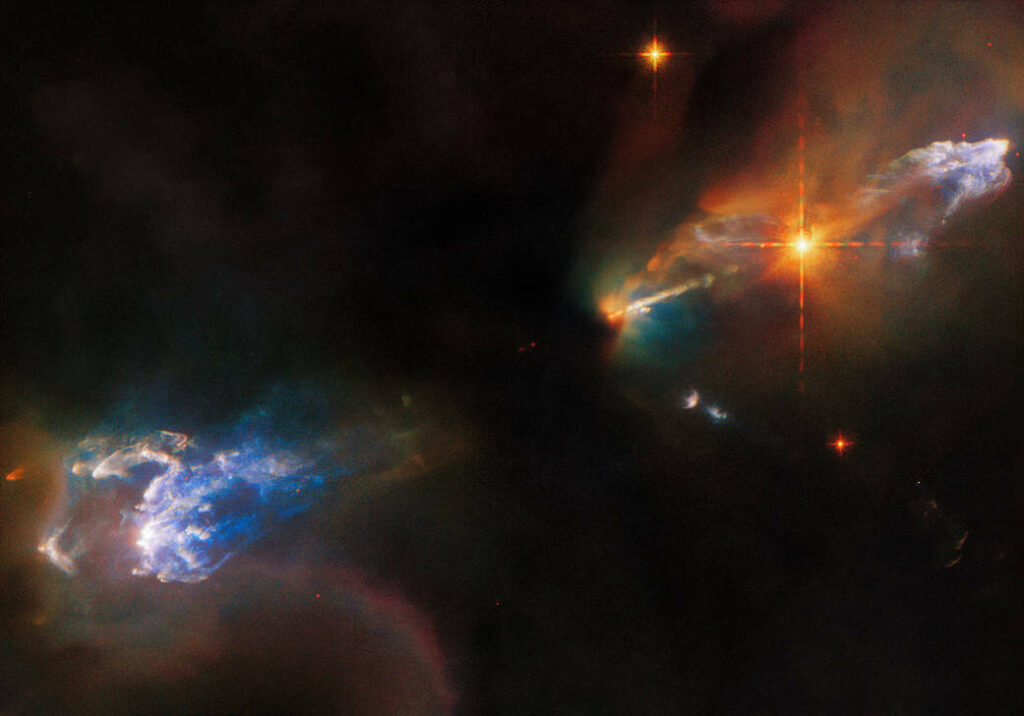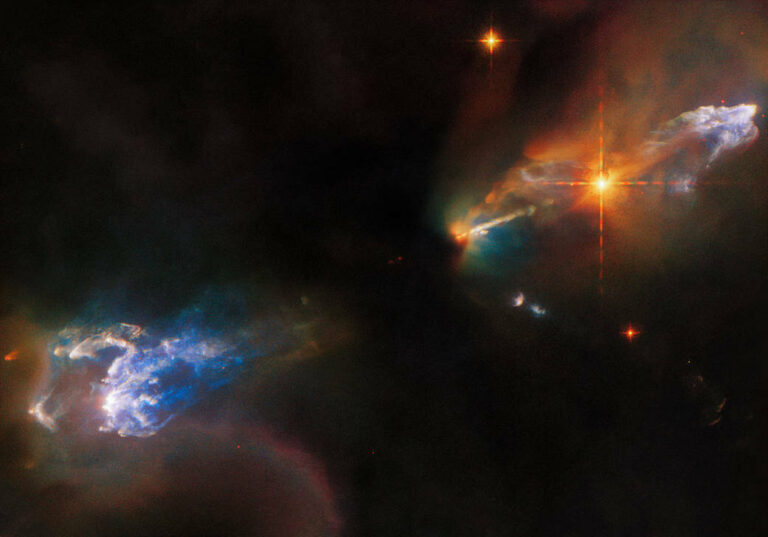Hubble Observes an Agitated Stellar Breeding Ground
The Hubble Space Telescope has captured an image of the Herbig-Haro objects HH 1 and HH 2, showcasing the tumultuous lives of newborn stars. These objects, located in the constellation Orion and approximately 1,250 light-years away from Earth, exhibit fascinating characteristics. HH 1 is the luminous cloud situated above the bright star in the upper right of the image, while HH 2 is the cloud in the bottom left.
Although the Herbig-Haro objects are visible, the young star system responsible for their formation remains hidden within the dense dust clouds at the center of the image. However, a bright jet can be observed as an outflow of gas from one of these stars streams out from the central dark cloud. Interestingly, astronomers initially believed that the bright star positioned between the jet and the HH 1 cloud was the source of these jets. However, it has been discovered that this star is actually an unrelated double star that formed nearby.
Herbig-Haro objects are clumps of glowing gas that form around newborn stars. They are created when jets of gas expelled by these young stars collide with the surrounding gas and dust at incredibly high speeds. In fact, Hubble observations in 2002 revealed that certain parts of HH 1 are moving at speeds exceeding 248 miles (400 kilometers) per second!

To capture this image of the turbulent stellar nursery, Hubble’s Wide Field Camera 3 utilized 11 different filters across infrared, visible, and ultraviolet wavelengths. Each filter is sensitive to a specific slice of the electromagnetic spectrum, enabling astronomers to identify and study various processes that emit light at specific wavelengths.
In the case of HH 1 and HH 2, two groups of astronomers requested Hubble observations for separate studies. The first study focused on examining the structure and motion of the Herbig-Haro objects visible in the image, providing valuable insights into the physical processes that occur when outflows from young stars collide with the surrounding gas and dust.
The subsequent investigation focused on the outflows directly, aiming to establish a foundation for forthcoming observations utilizing the NASA/ESA/CSA James Webb Space Telescope. The Webb telescope, renowned for its capability to penetrate the dust clouds surrounding nascent stars, will bring about a transformative era in the examination of outflows originating from young stars.
This article is republished from PhysORG under a Creative Commons license. Read the original article.
Do not forget to share your opinion with us to provide you with the best posts !





0 Comments